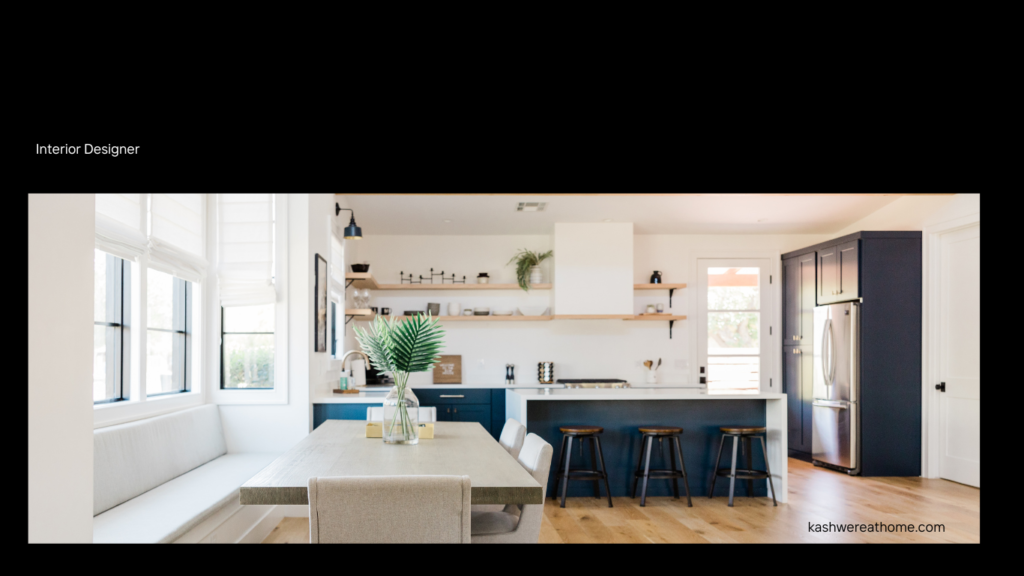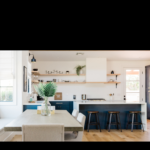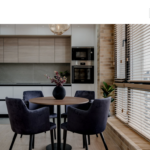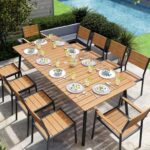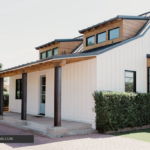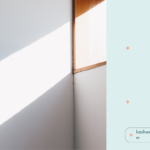Contents
- 1 Budget Friendly Kitchen Remodeling Ideas
- 1.1 Introduction
- 1.2 Planning Your Budget Kitchen Remodel
- 1.3 Cabinet Transformations on a Budget
- 1.4 Affordable Countertop Solutions
- 1.5 Budget-Friendly Flooring Options
- 1.6 Backsplash Ideas That Won’t Break the Bank
- 1.7 DIY-Friendly Lighting Upgrades
- 1.8 Low-Cost Appliance Updates
- 1.9 Small Upgrades with Big Impact
- 1.10 Bringing It All Together: Sample Budget Kitchen Makeovers
Budget Friendly Kitchen Remodeling Ideas
Introduction
Kitchen remodeling often tops the list of home improvement projects that homeowners dream about, but the price tag can quickly turn that dream into a nightmare. The good news? Budget Friendly Kitchen Remodeling Ideas are abundant if you know where to look and how to plan. A kitchen renovation doesn’t have to break the bank to make a significant impact on your home’s value and your daily living experience. Whether you’re looking to make small updates or completely transform your cooking space,
this guide will walk you through affordable options that deliver maximum impact with minimum investment. From smart cabinet refreshes to DIY backsplashes, budget-conscious countertop alternatives to lighting that transforms spaces, we’ll explore how strategic choices can help you achieve a kitchen that looks expensive but fits comfortably within your financial parameters.
Planning Your Budget Kitchen Remodel
Before diving into specific remodeling ideas, it’s crucial to approach your kitchen renovation with a solid plan. A well-thought-out strategy will help you avoid costly mistakes and ensure your money goes where it matters most.
Set a Realistic Budget
The first step in any budget-friendly kitchen remodel is establishing how much you’re willing to spend. According to HomeAdvisor, the average kitchen remodel costs between $13,000 and $37,000, but budget-friendly renovations can be completed for as little as $4,000 to $10,000.
When setting your budget:
- Add a 20% buffer for unexpected expenses
- Prioritize structural needs over aesthetic wants
- Consider the return on investment (ROI) for each upgrade
- Research the average costs in your area, as labor prices vary significantly by region
- Be honest about what you can truly afford without straining your finances
Remember that even small improvements can dramatically change the look and feel of your kitchen. Setting a realistic budget from the start will help guide all your decisions moving forward and prevent project scope creep.
Prioritize Your Needs vs. Wants
Not all kitchen elements deliver the same bang for your buck. Create two lists: must-haves and nice-to-haves. This exercise helps ensure essential improvements receive funding before cosmetic upgrades.
Consider these questions when prioritizing:
- What functional problems need solving? (Limited counter space, poor layout, insufficient storage)
- Which elements are genuinely worn out or damaged?
- What cosmetic changes would make the biggest visual impact?
- Which upgrades would improve your daily cooking experience most?
For instance, if your cabinets are structurally sound but dated in appearance, a refresh rather than replacement makes sense. Conversely, if your appliances are failing or highly inefficient, replacing them might be worth the investment.
DIY vs. Professional Help
Determining what you can realistically tackle yourself is crucial for budget planning. While DIY projects can save substantial amounts on labor costs, they can become expensive disasters if you take on tasks beyond your skill level.
| Tasks Suitable for DIY | Tasks Better Left to Professionals |
|---|---|
| Cabinet painting | Electrical work |
| Hardware replacement | Plumbing relocations |
| Backsplash installation (certain types) | Gas line modifications |
| Shelf installation | Structural changes |
| Faucet replacement | Complete cabinet installation |
| Light fixture swaps (simple) | Countertop fabrication |
| Wall painting | Extensive tile work |
When considering DIY, honestly assess:
- Your skill level and experience with similar projects
- Tools you already own versus what you’d need to purchase
- The time you can realistically commit
- The complexity of the task and potential for costly mistakes
Sometimes hiring a professional for complex tasks while handling simpler aspects yourself provides the best balance between savings and quality results.
Cabinet Transformations on a Budget
Cabinets typically account for nearly 30% of kitchen remodel costs. Completely replacing them can quickly eat through your budget, but several affordable alternatives can dramatically transform their appearance.
Paint Your Existing Cabinets
Cabinet painting offers perhaps the biggest visual transformation for the lowest cost. For approximately $200-$600 in materials (depending on kitchen size), you can completely reinvent your kitchen’s look.
Key Features:
- Transforms the entire kitchen atmosphere
- Allows for creative color choices to match current trends
- Can brighten dark kitchens or add sophistication to bland spaces
- Provides opportunity to fix minor cabinet damage during prep work
The Process:
- Remove all hardware and doors
- Clean thoroughly with a degreaser
- Lightly sand all surfaces
- Apply primer designed for cabinets
- Apply 2-3 coats of high-quality cabinet paint
- Reinstall with new hardware for maximum impact
Popular color choices include white for brightness, navy for sophistication, sage green for a natural feel, or black for drama. Consider painting upper cabinets a lighter color than lowers for a modern two-tone look.
| Pros | Cons |
|---|---|
| Extremely cost-effective | Labor intensive and time-consuming |
| Dramatic visual impact | Requires meticulous prep work |
| Can be completed in a weekend | May show wear faster than factory finishes |
| Customizable color options | Not suitable for severely damaged cabinets |
| No demolition required | Requires space to work on cabinet doors |
Replace Cabinet Doors Only
If your cabinet boxes remain in good condition but the doors are dated or damaged, consider replacing just the doors while keeping the existing framework.
Key Features:
- Costs roughly 30-50% less than full cabinet replacement
- Provides a like-new appearance
- Allows for style modernization
- Can be ordered custom-sized to fit existing cabinet boxes
Many companies specialize in replacement cabinet doors in various styles and materials. For even greater savings, consider ready-to-assemble (RTA) options from retailers like IKEA or cabinet suppliers that offer “drawer and door” programs.
| Pros | Cons |
|---|---|
| Significantly cheaper than full replacement | Requires precise measurements |
| Minimizes demolition and installation time | May require professional installation |
| Creates like-new appearance | Limited by existing cabinet layout |
| Reduces waste | Color matching with existing boxes can be challenging |
| Can upgrade to soft-close hinges during process | Not suitable if cabinet boxes are damaged |
Add Open Shelving
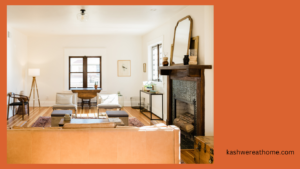
Removing some upper cabinet doors—or the cabinets entirely—and installing open shelving creates a modern, airy feel while potentially saving hundreds of dollars.
Key Features:
- Costs approximately $100-$300 for materials
- Creates visual spaciousness in small kitchens
- Allows for decorative display of attractive dishware
- Provides convenient access to frequently used items
Open shelving options range from floating wood shelves to industrial pipe-supported styles. For maximum budget-friendliness, repurpose the wood from removed cabinet doors to create matching shelves.
| Pros | Cons |
|---|---|
| Inexpensive and relatively easy to install | Requires regular cleaning and organization |
| Opens up visual space | Exposes dishes to dust |
| Highly customizable | Reduces closed storage space |
| Can utilize existing cabinet boxes | May not appeal to all future buyers |
| Allows for personal expression | Requires attractive dishware for display |
Upgrade Cabinet Hardware
Never underestimate the transformative power of new cabinet hardware. This simple, low-cost upgrade can modernize even the most dated cabinets.
Key Features:
- Typically costs $100-$300 total for an average kitchen
- Requires only basic tools and minimal time investment
- Offers thousands of style options to match any aesthetic
- Provides opportunity to enhance functionality with easier-to-grip designs
When selecting new hardware:
- Ensure new pulls will fit existing hole patterns or be prepared to fill and redrill
- Consider cabinet style—sleek, modern handles complement contemporary cabinets while vintage knobs may suit traditional styles
- Choose finishes that coordinate with existing fixtures (faucets, lighting)
- Look for bulk packs to reduce per-piece costs
| Pros | Cons |
|---|---|
| Extremely cost-effective | Limited impact if cabinets themselves are very damaged |
| Quick installation (usually under 2 hours) | May require filling and drilling new holes |
| No special skills required | Quality hardware can become expensive in large kitchens |
| Instantly updates appearance | May highlight other dated elements in kitchen |
| Can be easily changed in future | Must work within existing cabinet door design |
Affordable Countertop Solutions
Countertops make a significant visual impact in any kitchen, but natural stone options like granite or marble can quickly consume a remodeling budget. Fortunately, several budget-friendly alternatives provide attractive, durable surfaces at a fraction of the cost.
Laminate Countertops
Modern laminate has come a long way from its dated predecessors, now offering remarkably realistic stone and wood appearances at about 1/3 the cost of natural materials.
Key Features:
- Average cost: $15-$40 per square foot installed
- Available in hundreds of patterns and colors
- Many options mimic higher-end materials convincingly
- Newer products offer improved water and heat resistance
- Some brands offer undermount sink compatibility
Premium laminate brands like Formica, Wilsonart, and Nevamar offer high-definition patterns that realistically simulate granite, marble, and other luxury materials. Some even include texture that matches the visual pattern for enhanced realism.
| Pros | Cons |
|---|---|
| Highly affordable | Can be damaged by direct heat |
| Easy to clean and maintain | Cannot be effectively repaired if damaged |
| Lightweight and DIY-friendly | Visible seams in L-shaped installations |
| Vast selection of colors and patterns | Less prestige than natural materials |
| Resistant to stains | Shorter lifespan (10-15 years typically) |
Butcher Block Countertops
Wood countertops bring warmth and natural beauty to kitchens at a surprisingly affordable price point, especially if you’re willing to install them yourself.
Key Features:
- Average cost: $20-$60 per square foot
- Available in various wood species (maple, oak, walnut)
- Can be purchased in pre-cut lengths from home improvement stores
- Offers natural beauty that improves with age
- Can be refinished repeatedly over time
- Budget Friendly Kitchen Remodeling Ideas
For maximum savings, consider purchasing unfinished butcher block from stores like IKEA or Lumber Liquidators and finishing it yourself with food-safe oil or sealant.
| Pros | Cons |
|---|---|
| Natural, warm aesthetic | Requires regular maintenance (oiling) |
| DIY-friendly installation | Can be damaged by water if not properly sealed |
| Can be sanded and refinished | Shows knife cuts and dents |
| Naturally antibacterial (when properly maintained) | May expand and contract with humidity changes |
| Often available in ready-to-install sections | Not ideal near sinks without proper sealing |
Concrete Countertops
For the adventurous DIYer, concrete countertops offer a high-end, custom look at a fraction of traditional stone prices.
Key Features:
- Average cost: $65-$135 per square foot professionally installed, but DIY materials can be as low as $8-$15 per square foot
- Completely customizable colors and finishes
- Can incorporate unique elements like glass fragments or stone
- Creates a distinctive, industrial-modern aesthetic
- Can be cast in place or precast in sections
DIY concrete countertop kits are available from companies like Concrete Countertop Solutions, making this high-end look more accessible to budget-conscious homeowners.
| Pros | Cons |
|---|---|
| Unique, custom appearance | Requires significant DIY skill |
| Extremely durable when properly sealed | Heavy and may require cabinet reinforcement |
| Heat resistant | Can develop hairline cracks over time |
| Can be formed to any shape | Requires regular sealing maintenance |
| Relatively inexpensive materials | Time-intensive installation process |
Tile Countertops
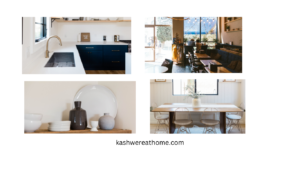
Ceramic or porcelain tile creates durable, heat-resistant countertops at a budget-friendly price point, Budget Friendly Kitchen Remodeling Ideas especially if you handle the installation yourself.
Key Features:
- Average cost: $10-$40 per square foot for materials
- Endless design possibilities with different sizes, colors, and patterns
- Heat and stain resistant
- Can create visual interest through patterns or accent tiles
- Individual tiles can be replaced if damaged
Consider large-format tiles to minimize grout lines, which are the main maintenance concern with tile countertops. Epoxy grout, while more expensive, resists staining better than standard grout.
| Pros | Cons |
|---|---|
| Very affordable material cost | Grout lines require regular cleaning |
| Highly customizable design | Uneven surface can make rolling dough difficult |
| DIY-friendly installation | Installation is labor-intensive |
| Heat and water resistant | Can crack if heavy items are dropped |
| Easy to replace individual damaged tiles | Grout can stain without proper sealing |
Budget-Friendly Flooring Options
Kitchen flooring needs to withstand heavy foot traffic, occasional spills, and dropped cookware while looking attractive—all without breaking your remodeling budget.
Luxury Vinyl Plank/Tile (LVP/LVT)
Luxury vinyl has revolutionized the budget flooring market with its remarkable realism, durability, and water resistance.
Key Features:
- Average cost: $2-$7 per square foot for materials
- Available in wood and stone looks with realistic textures
- 100% waterproof options available
- Warm and comfortable underfoot
- Many click-together floating installation options for DIY
Modern luxury vinyl from brands like COREtec, Pergo, and LifeProof offers photorealistic wood or stone appearances with textured surfaces that convincingly mimic the real materials.
| Pros | Cons |
|---|---|
| Waterproof options available | Can be damaged by sharp objects |
| Easy DIY installation | Not as environmentally friendly as natural materials |
| Warm and comfortable underfoot | May show wear in high-traffic areas over time |
| Extremely durable | Cannot be refinished |
| Affordable price point | May fade with prolonged sun exposure |
Porcelain Tile
Porcelain tile offers exceptional durability and moisture resistance at a moderate price point.
Key Features:
- Average cost: $3-$10 per square foot for materials
- Available in countless styles, including wood-look options
- Extremely durable and moisture resistant
- Can be installed with or without grout lines (rectified edges)
- Works well with underfloor heating systems
Modern technologies have created porcelain tiles that convincingly mimic hardwood, including texture and variation between “planks.”
| Pros | Cons |
|---|---|
| Extremely durable | Cold underfoot without radiant heating |
| Waterproof | Requires proper subfloor preparation |
| Resistant to scratches and stains | More difficult DIY installation |
| Easy to clean | Grout requires regular cleaning and maintenance |
| Can last decades with proper installation | Hard surface can be uncomfortable for long periods of standing |
Laminate Flooring
Laminate provides a wood-look option at an entry-level price point, though it comes with some limitations in kitchen environments.
Key Features:
- Average cost: $1-$5 per square foot for materials
- Wide variety of wood-look styles and colors
- Floating installation doesn’t require adhesive to subfloor
- Relatively simple DIY installation with click-together systems
- More resistant to scratching than vinyl
When using laminate in kitchens, look specifically for water-resistant or waterproof varieties from brands like Pergo WetProtect or Mohawk RevWood Plus.
| Pros | Cons |
|---|---|
| Very budget-friendly | Traditional laminate vulnerable to water damage |
| Easy DIY installation | Cannot be refinished |
| Resistant to scratches and fading | Can sound hollow or “clicky” when walked on |
| Wide variety of styles | Susceptible to edge swelling if water penetrates |
| Durable wear layer | Less convincing than vinyl in mimicking real wood |
Sheet Vinyl
For the most budget-conscious renovation, sheet vinyl offers a continuous waterproof surface at the lowest price point.
Key Features:
- Average cost: $0.50-$2 per square foot for materials
- Single seamless installation minimizes water infiltration
- Available in patterns mimicking tile, stone, and wood
- Soft and comfortable underfoot
- Some products include cushioned backing for added comfort
Modern sheet vinyl like Armstrong’s Cushionstep or Tarkett’s FiberFloor offers improved realism and durability compared to older products.
| Pros | Cons |
|---|---|
| Lowest cost option | Can be punctured or torn by sharp objects |
| Completely waterproof | Difficult for DIYers to install properly |
| Soft and comfortable underfoot | Less convincing imitation of natural materials |
| Easy to clean | Cannot be repaired, only replaced |
| Seamless installation | Shorter lifespan than other options |
Backsplash Ideas That Won’t Break the Bank
A new backsplash can transform your kitchen’s appearance at a relatively modest cost, especially if you’re willing to tackle the installation yourself.
Peel-and-Stick Tiles
Self-adhesive tiles provide the look of a traditional backsplash with minimal tools, skills, or mess.
Key Features:
- Average cost: $5-$15 per square foot
- Available in a variety of materials (vinyl, gel, metal, glass)
- No mortar or grout required
- Can be installed in a few hours
- Many designs mimic traditional tile, marble, or mosaic patterns
- Budget Friendly Kitchen Remodeling Ideas
Smart Tiles and Tic Tac Tiles are popular brands offering high-quality peel-and-stick options that resist heat and moisture surprisingly well.
| Pros | Cons |
|---|---|
| Extremely easy installation | Less durable than traditional tile |
| No special tools required | May peel in high-humidity environments |
| Instant transformation | Limited by existing wall texture |
| Can be removed without wall damage | Not as heat resistant near ranges |
| No messy grout or mortar | Generally not recommended for rental properties |
Paintable Textured Wallpaper
Textured wallpaper creates dimensional patterns that can mimic tin ceiling tiles, embossed patterns, or other textured surfaces when painted.
Key Features:
- Average cost: $1-$3 per square foot plus paint
- Available in numerous raised patterns
- Can be painted any color to match decor
- Creates dimensional interest without the cost of specialty materials
- Can be sealed with washable clear coat for durability
Look for brands like Graham & Brown or Anaglypta that specialize in paintable textured wallpapers specifically designed for durability.
| Pros | Cons |
|---|---|
| Very budget-friendly | Less durable than hard-surface options |
| Unlimited color possibilities | Requires painting after installation |
| Creates dimensional interest | May be difficult to clean in heavy cooking areas |
| Relatively easy DIY installation | Can be damaged by moisture without proper sealing |
| Can be painted over repeatedly | May eventually peel in high-humidity environments |
Beadboard Panels
Beadboard panels bring classic cottage charm to kitchen backsplashes at a modest price point.
Key Features:
- Average cost: $1-$2 per square foot for materials
- Available in easy-to-install panels or sheets
- Creates distinctive vertical groove pattern
- Can be painted any color
- Brings traditional, timeless appeal
Vinyl or PVC beadboard offers greater moisture resistance than wood versions, making it more suitable for kitchen environments.
| Pros | Cons |
|---|---|
| Classic, timeless appearance | Not suitable for behind ranges without proper sealing |
| Extremely budget-friendly | Grooves can collect dust and grease |
| Easy to install with basic tools | Less contemporary than tile options |
| Can be painted any color | Requires caulking at edges and seams |
| Adds architectural interest | May absorb moisture without proper sealing |
Paint and Stencils
For the absolute lowest-cost backsplash option, consider paint enhanced with stenciled patterns to mimic the look of tile.
Key Features:
- Average cost: Under $1 per square foot plus paint
- Unlimited color and pattern possibilities
- Creates custom, one-of-a-kind designs
- Can incorporate metallic or specialty finish paints
- No structural changes required
Specialized stencils designed to mimic cement tile patterns, Moroccan designs, or classic motifs are available from crafting stores and online retailers.
| Pros | Cons |
|---|---|
| Lowest cost option | Less durable than hard surfaces |
| Completely customizable | Requires patience and steady hand |
| Easy to change in future | May require touchups over time |
| No special tools required | Not as moisture resistant without proper sealing |
| Can be completed in a weekend | Results depend heavily on execution quality |
DIY-Friendly Lighting Upgrades
Lighting has a profound impact on kitchen functionality and atmosphere, and many lighting upgrades are surprisingly affordable and DIY-friendly.
Under-Cabinet Lighting
Adding under-cabinet lighting improves task lighting while creating ambiance when used alone in the evening.
Key Features:
- Average cost: $20-$100 depending on type and kitchen size
- Available in puck, strip, or bar configurations
- Options include halogen, fluorescent, or LED (recommended)
- Some systems are wireless and battery-powered, requiring no electrical work
- Creates both functional task lighting and pleasant ambiance
Plug-in LED light strips or pucks from brands like Litever or GE offer easy installation without electrical knowledge. For even simpler installation, battery-powered motion-activated options are available.
| Pros | Cons |
|---|---|
| Dramatically improves task lighting | Wired versions may require electrical knowledge |
| Creates evening ambiance | Battery-powered versions need battery replacement |
| Highlights countertop surfaces | Visible wires can look untidy |
| Many wireless options available | Some cheaper LED versions have inconsistent color |
| Makes kitchen feel larger and more custom | May highlight countertop imperfections |
Pendant Light Swaps
Replacing dated ceiling fixtures with stylish pendant lights creates a custom designer look for minimal investment.
Key Features:
- Average cost: $50-$200 per pendant
- Thousands of styles available across all design aesthetics
- Creates visual focal points
- Brings light closer to work surfaces
- Often can use existing ceiling junction boxes
Consider repurposing unusual items as pendant lights—Mason jars, colanders, or vintage finds can be converted with simple pendant light kits available at home centers.
| Pros | Cons |
|---|---|
| Dramatic visual impact | May require basic electrical knowledge |
| Relatively simple installation | Poorly placed pendants can obstruct sightlines |
| Brings personalized style | Creates potential obstacles in small kitchens |
| Can use existing wiring locations | Some styles collect dust and are difficult to clean |
| Often available at discount retailers | May date more quickly than recessed lighting |
Recessed Lighting Retrofit
If your kitchen has older recessed lighting, LED retrofit kits offer improved light quality and energy efficiency without major construction.
Key Features:
- Average cost: $15-$30 per light
- Available in various color temperatures (warm to cool)
- Most kits install in minutes
- Many include trim to update appearance
- Uses existing recessed housing
Brands like Halo, Commercial Electric, and Philips offer simple retrofit kits that install directly into existing recessed can housings, requiring only the removal of the old bulb and trim.
| Pros | Cons |
|---|---|
| Significantly improved energy efficiency | Limited to existing light locations |
| Better light quality and brightness | May require adapter for certain can types |
| Simple installation | Some cheaper options have poor color rendering |
| Modern, clean appearance | Cannot change light location without electrical work |
| Many include dimming capability | May highlight ceiling imperfections |
DIY Edison Bulb Fixtures
Industrial-style fixtures using exposed Edison bulbs offer designer style at a modest price point, especially when DIY-created.
Key Features:
- Average cost: $50-$150 for materials
- Creates industrial-chic, vintage appeal
- Customizable to kitchen dimensions and style
- Can incorporate repurposed materials
- Makes a distinctive design statement
Hardware and plumbing supply stores offer pipe fittings and electrical components needed to create custom industrial-style fixtures at a fraction of retail prices.
| Pros | Cons |
|---|---|
| Unique, custom appearance | Traditional Edison bulbs use more energy |
| Can be sized exactly to space | Exposed bulbs provide less diffused light |
| Highly customizable | Requires basic electrical knowledge |
| Often less expensive than retail fixtures | Industrial style may eventually date |
| Creates conversation piece | Bulb replacement can be costly for multiple lights |
Low-Cost Appliance Updates
Appliances significantly impact both kitchen functionality and appearance, but complete replacement isn’t always necessary or budget-friendly.
Appliance Paint
Special appliance paint can transform dated almond or white appliances to modern stainless or black finishes.
Key Features:
- Average cost: $20-$50 total
- Available in stainless steel, black, white, and other finishes
- Special formulation adheres to appliance surfaces
- Heat and moisture resistant options available
- Creates cohesive look among mismatched appliances
- Budget Friendly Kitchen Remodeling Ideas
Brands like Rust-Oleum and Krylon make specialized appliance paints and stainless steel finish kits designed to withstand kitchen conditions.
| Pros | Cons |
|---|---|
| Extremely budget-friendly | Results depend on preparation quality |
| Creates cohesive appearance | Not as durable as factory finishes |
| No disposal/installation issues | Time-consuming proper preparation |
| Extends life of functional appliances | May void appliance warranties |
| Customizable color options | Challenging for textured appliance surfaces |
Appliance Films and Covers
Adhesive films designed specifically for appliances offer a less permanent alternative to paint for updating appearances.
Key Features:
- Average cost: $30-$80 per appliance
- Available in stainless steel looks, colors, or patterns
- Removable without damage to appliance
- Pre-cut options available for common appliance models
- Creates uniform appearance among different brands
Companies like EzFaux Décor and d-c-fix specialize in high-quality appliance films that resist heat, moisture, and cleaning products.
| Pros | Cons |
|---|---|
| Non-permanent solution | Can be challenging to apply without bubbles |
| No painting skills required | Edges may eventually lift in high-moisture areas |
| Creates uniform appearance | Less durable than factory finishes |
| Removable for rental properties | May interfere with heat dissipation if improperly applied |
| Wide variety of finishes available | Custom cuts needed for unusual appliance models |
Open Box and Scratch-and-Dent Appliances
Purchasing floor models, open-box returns, or appliances with minor cosmetic damage can save 20-60% off retail prices.
Key Features:
- Average savings: 20-60% off retail
- Usually includes full manufacturer warranty
- Minor cosmetic imperfections often in non-visible locations
- Same functionality as perfect models
- Immediate availability versus special ordering
Home improvement centers, appliance retailers, and outlet stores typically maintain sections for discounted models. Many scratches or dents face walls or cabinetry once installed, making them invisible in everyday use.
| Pros | Cons |
|---|---|
| Substantial cost savings | Limited selection and availability |
| New appliance functionality | May have minor cosmetic issues |
| Usually includes standard warranty | Often final sale with no returns |
| Immediate availability | May require flexibility in exact models/features |
| Energy efficiency of new models | Requires in-person shopping to evaluate condition |
Energy Efficient Replacements
When replacement is necessary, focusing on energy-efficient models can offset costs through utility savings.
Key Features:
- Average annual savings: $30-$100 per appliance in energy costs
- May qualify for utility rebates or tax incentives
- ENERGY STAR rating indicates superior efficiency
- Improved functionality over older models
- Modern design aesthetics
- Budget Friendly Kitchen Remodeling Ideas
Many utilities offer rebates ranging from $25-$100 for ENERGY STAR appliances. Combined with manufacturer rebates, these incentives can significantly reduce net costs.
| Pros | Cons |
|---|---|
| Long-term energy savings | Higher initial investment |
| Potential rebates and incentives | Installation costs for complex appliances |
| Improved functionality | Disposal costs for old appliances |
| Modern aesthetics | May require cabinet modifications for newer sizes |
| Better environmental impact | Feature creep can drive up costs unnecessarily |
Small Upgrades with Big Impact
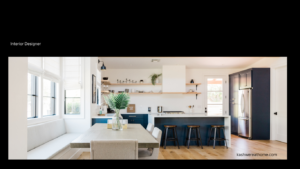
Sometimes the most transformative kitchen upgrades are also the most affordable. These small changes can significantly enhance both aesthetics and Budget Friendly Kitchen Remodeling Ideas functionality.
Faucet Replacement
Replacing an outdated kitchen faucet with a modern style instantly modernizes the sink area while potentially adding functionality.
Key Features:
- Average cost: $75-$200
- Thousands of styles and finishes available
- Many include modern features like pull-down sprayers
- Most installations require only basic tools
- Creates focal point at main work center
Look for faucets with ceramic disc Budget Friendly Kitchen Remodeling Ideas valves for durability and lifetime warranties from reputable brands like Moen, Delta, or Kohler, which frequently offer budget-friendly lines with professional features.
| Pros | Cons |
|---|---|
| Dramatic visual upgrade | May uncover sink or plumbing issues during installation |
| Relatively simple DIY installation | Quality models still represent significant investment |
| Improves daily functionality | Installation in tight spaces can be challenging |
| Wide price range available | May highlight other dated elements near sink |
| Many include warranties | Some require additional holes in sink/counter |
Interior Cabinet Organizers
Adding organization systems to Budget Friendly Kitchen Remodeling Ideas existing cabinets maximizes storage capacity without structural changes.
Key Features:
- Average cost: $20-$100 per cabinet
- Options include pull-out shelves, dividers, and specialized racks
- Maximizes storage capacity of existing spaces
- Improves accessibility to back of deep cabinets
- Creates custom organization for specific needs
Rev-A-Shelf, Simplehuman, and IKEA offer affordable cabinet organization solutions that install with basic tools. For maximum savings, look for wire systems rather than solid wood construction.
| Pros | Cons |
|---|---|
| Maximizes existing storage | Some solutions reduce overall storage capacity |
| Improves accessibility | Installation may require cabinet modifications |
| Customizable to specific needs | Quality systems can become expensive across many cabinets |
| Relatively simple installation | Must be sized correctly to specific cabinets |
| Transferable to future homes | May require removal of existing shelving |
Statement Wall Art
Dedicated kitchen art creates focal points and expresses personality without costly structural changes.
Key Features:
- Average cost: $20-$100
- Infinite style options available
- Creates visual interest on blank walls
- Expresses personal style inexpensively
- Easily changeable as tastes evolve
- Budget Friendly Kitchen Remodeling Ideas
Consider food-themed vintage advertisements, professional food photography prints, or framed menus from special restaurants. For budget options, look to Etsy, Society6, or even print and frame your own food photography.
| Pros | Cons |
|---|---|
| Extremely affordable | Requires wall space not consumed by cabinets |
| Instantly adds personality | May be damaged by cooking moisture or grease |
| Easily changeable | Requires consideration of kitchen color scheme |
| No installation complexity | May require cleaning more frequently than in other rooms |
| Can repurpose items already owned | Glass frames may be hazardous in earthquake-prone areas |
Kitchen Textiles Refresh
New dish towels, rugs, curtains, and chair cushions bring color and pattern to kitchens at minimal cost.
Key Features:
- Average cost: $10-$100 total
- Introduces color and pattern without commitment
- Can coordinate with existing elements
- Easily changeable with seasons or trends
- Improves comfort and acoustics in hard-surfaced kitchens
Stores like HomeGoods, Target, and IKEA offer affordable kitchen textiles that can transform a kitchen’s feel seasonally or as design trends evolve.
| Pros | Cons |
|---|---|
| Lowest cost color introduction | Requires regular laundering in kitchen environment |
| No installation required | May show stains and wear quickly |
| Easily changed seasonally | Limited impact on overall kitchen appearance |
| Can test color schemes inexpensively | May fade near windows |
| Often serves practical functions | Quality fabrics cost more but last longer |
Bringing It All Together: Sample Budget Kitchen Makeovers
To illustrate how these ideas work together, here are three sample kitchen makeovers at different price points, each dramatically improving appearance and functionality without breaking the bank.
The Weekend Warrior: $500 Makeover
This ultra-budget makeover focuses on paint and small accessories to transform a kitchen’s appearance with minimal investment.
Key Components:
- Cabinet painting: $200 (paint, primer, supplies)
- New cabinet hardware: $100
- Painted backsplash with stencil pattern: $50
- Updated light fixture: $75
- New kitchen textiles and accessories: $75
This approach works best when existing cabinets, countertops, and appliances are structurally sound but dated in appearance. The dramatic change comes primarily from the cabinet color transformation and coordinated accessories.
The Practical Refresh: $2,000 Makeover
This mid-range budget allows for more substantial changes while still maintaining cost control.
Key Components:
- Cabinet painting with new hardware: $350
- Laminate countertop replacement: $600
- Luxury vinyl plank flooring: $500
- New faucet and sink: $250
- Under-cabinet lighting: $150
- Backsplash tile (DIY installation): $150
This budget allows for replacement of the most worn surfaces while updating the kitchen’s overall look. Focusing on DIY-friendly projects stretches the budget further.
The Strategic Remodel: $5,000 Makeover
This higher budget allows for more significant changes that improve both appearance and functionality.
Key Components:
- Cabinet painting with organization solutions: $600
- Butcher block or quartz remnant countertops: $1,200
- New energy-efficient appliances (scratch & dent): $1,800
